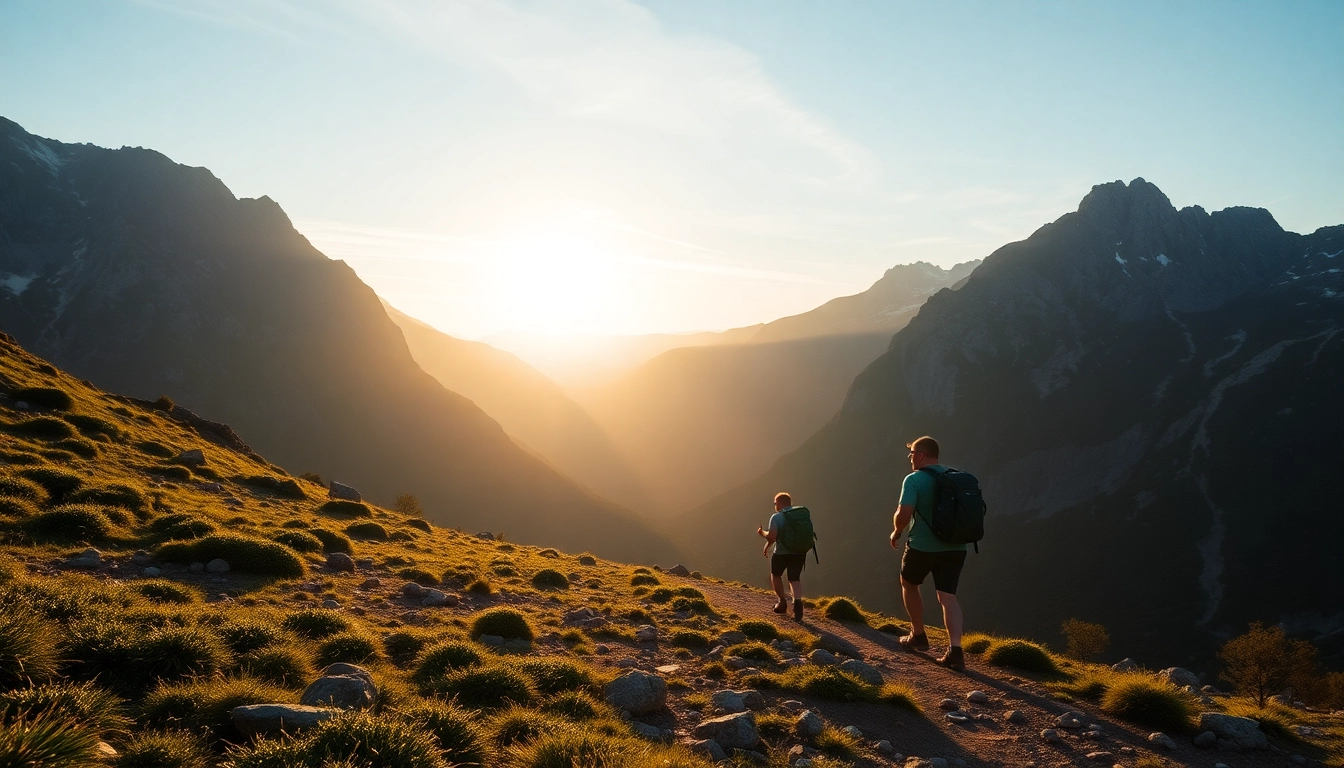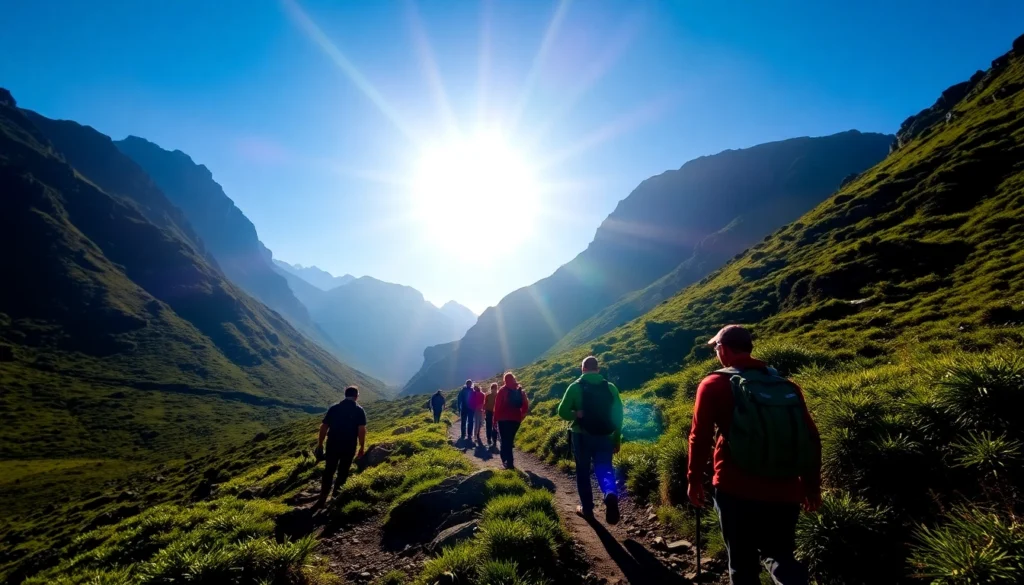Understanding Trekking: Definition, Differences, and Key Concepts
What Is Trekking? Clarifying the Basics
Trekking is an adventurous outdoor activity that involves long-distance walking across rugged, often remote, natural terrains. Unlike casual hiking, which typically covers shorter distances on well-marked trails, trekking usually spans multiple days, requiring participants to be physically prepared for prolonged exertion in challenging environments. This activity is characterized by traversing diverse landscapes such as mountains, forests, valleys, and sometimes cultural sites. Trekkers often venture into less accessible regions, engaging with nature in its rawest form, and immersing themselves in the local ecosystems and cultures.
In essence, trekking involves a vigorous, sustained effort that demands both physical stamina and mental resilience. It can range from mountain trekking in the Himalayas to jungle expeditions in Indonesia, with routes tailored to various skill levels and interests. For those interested in exploring the stunning natural beauty of Indonesia’s diverse geography, trekking offers an extraordinary way to connect with nature while achieving personal fitness and adventure goals.
According to prominent sources, trekking is defined as “a long, vigorous hike in a wild natural environment for multiple days, often off hiking trails,” emphasizing its challenging, immersive nature. Whether you are navigating through lush rainforests, volcanic landscapes, or mountainous terrains, trekking provides a unique experience that blends physical activity with cultural exploration and environmental appreciation.
Trekking vs Hiking: What Sets Them Apart?
While often used interchangeably, trekking and hiking are distinct activities with important differences. Understanding these distinctions is crucial for planning your outdoor adventures effectively.
Hiking generally refers to walking on established trails, usually for a few hours or a single day. It’s accessible to most people, requiring basic fitness and equipment, and often suitable for recreational outings or family excursions. In contrast, trekking involves multi-day journeys through more rugged terrains, often with limited trail systems. It demands higher levels of physical endurance, advanced planning, and sometimes overnight stays in tents, cottages, or local accommodations.
For example, a day hike in a national park might involve a manageable trail with clear markings, while a trek across Indonesia’s volcanic landscapes, like Mount Rinjani, requires more preparation, including permits, specialized gear, and logistical arrangements for food, water, and shelter. Experts point out that trekking is typically a journey that “requires more effort, involves navigating less predictable terrains, and often includes cultural experiences along the route” (source: Halodoc).
In summary, although both activities share the core element of walking in natural environments, trekking’s extended duration and challenging terrains make it a more demanding and immersive experience.
Common Types of Trekking Adventures in Indonesia
Indonesia, with its vast archipelago and diverse landscapes, offers an array of trekking experiences suited for all levels. Here are some prominent types of treks in Indonesia:
- Mountain Trekking: Climbing volcanic mountains such as Mount Rinjani in Lombok, Mount Bromo in Java, or Mount Semeru. These treks require acclimatization, technical skills, and sometimes camping gear.
- Jungle Trekking: Exploring the dense rainforests of Kalimantan or Sumatra, where trekkers can encounter endemic wildlife, waterfalls, and indigenous cultures.
- Cultural Trekking: Visiting remote villages and cultural sites, blending physical activity with cultural immersion, like trekking through Bali’s rice terraces to meet local artisans.
- Coastal Trekking: Traversing along Indonesia’s extensive coastlines, such as the beaches of Komodo or the islands around Raja Ampat, often combined with snorkeling or diving.
- Volcano Trekking: Ascending active or dormant volcanoes like Mount Merapi or Mount Ijen, famous for its lava lakes and sulfur vents.
These trekking types highlight Indonesia’s geographical richness, offering adventure enthusiasts a variety of experiences that challenge both body and mind while fostering appreciation for diverse ecosystems and local cultures.
Planning Your Trekking Journey: Preparation and Essentials
Choosing the Right Trekking Routes in Indonesia
Selecting an appropriate route is a foundational step in ensuring a safe and enjoyable trekking experience. Consider your fitness level, experience, the difficulty of terrain, and desired duration when choosing a trek. Indonesia offers routes ranging from beginner-friendly rainforest lifts to challenging multi-day mountain expeditions. Modern resources, trekking guides, and local agencies offer detailed maps and advice to help determine the best fit for your goals. It’s important to research seasonal weather patterns; for instance, the dry season (April to October) is ideal for most treks, minimizing risks related to rain and mud.
Packing Tips for Trekking in Diverse Terrains
Proper packing can make or break your trekking adventure. Essential items include moisture-wicking clothing, sturdy hiking boots, a lightweight tent or sleeping gear if camping, sufficient water bottles, nutrition supplies, a first aid kit, navigation tools, and sun protection. For Indonesian terrains, waterproof gear and insect repellent are also critical, especially in jungle environments. Advanced trekkers often utilize trekking poles for stability and lessening joint impact, and packing quick-drying clothes ensures comfort during sudden weather changes.
Physical Fitness and Mental Readiness for Trekking
Preparation goes beyond packing the right gear; physical and mental readiness are crucial. Cardiovascular endurance, leg strength, and core stability facilitate traversing challenging terrains. Incorporating cardio workouts, strength training, and flexibility exercises weeks before the trek will enhance performance. Mental resilience is equally important — embracing patience, adaptability, and problem-solving skills help manage unforeseen challenges like difficult weather, navigation issues, or fatigue. Consulting with fitness trainers and experienced trekkers can help tailor a training regimen suited for specific routes.
Executing a Successful Trekking Expedition
Guidelines for Safe Trekking Experiences
Safety is paramount in trekking adventures. Always undertake a comprehensive pre-trek briefing, informing yourself about the route, weather conditions, emergency contacts, and local regulations. Trek with a guide or experienced partner, especially in unfamiliar or remote areas. Maintaining a steady pace, staying hydrated, and taking regular breaks help prevent exhaustion. Carrying a communication device, like a satellite phone or GPS tracker, provides added security in areas with limited connectivity. Adhering to Leave No Trace principles ensures environmental preservation and respectful engagement with local communities.
Navigating Difficult Terrains and Weather Challenges
Rugged terrains demand careful navigation. Using detailed maps, GPS devices, or local guides mitigates risks of getting lost. Recognize signs of altitude sickness or fatigue, and descend or rest as needed. In monsoon seasons, sudden rainstorms can cause mudslides and slippery trails; thus, trekkers must be prepared with waterproof gear and sturdy footwear. Monitoring weather forecasts and adjusting schedules accordingly enables safe passage through potentially hazardous conditions.
Respecting Nature and Local Cultures
Responsible trekking emphasizes environmental sustainability and cultural sensitivity. Respect wildlife habitats, avoid littering, and adhere to designated trails to minimize ecological impact. Engaging with local communities offers enriching cultural exchanges; always seek permission before photography or interaction. Supporting local economies by purchasing handmade crafts or hiring local guides promotes sustainable tourism. Awareness of cultural norms and customs enriches the trekking experience and fosters positive relationships with host communities.
Maximizing Benefits of Trekking on Your Health and Well-being
Physical Fitness Gains from Trekking
Regular trekking enhances cardiovascular health, increases muscular strength, improves endurance, and supports weight management. The varied terrains engage different muscle groups, promoting balanced physical development. Long-term engagement in trekking can significantly improve stamina and flexibility, contributing to overall fitness. Scientific studies underscore that outdoor walks, especially in challenging environments, boost lung capacity and cardiovascular efficiency.
Mental Health and Stress Relief Through Wilderness
Trekking in natural environments reduces stress, anxiety, and depression. Exposure to green spaces stimulates the release of endorphins and serotonin, enhancing mood and mental clarity. The immersive experience fosters mindfulness, allowing trekkers to disconnect from daily life’s distractions and focus on the present moment. Case studies reveal that even short outdoor treks can significantly improve mental resilience and emotional well-being.
Environmental Awareness and Sustainable Trekking Practices
Sustainable trekking involves minimizing ecological footprints through responsible behaviors. This includes sticking to established paths, carrying out all waste, respecting local customs, and avoiding harm to flora and fauna. Participating in conservation efforts or eco-volunteering initiatives during treks promotes environmental stewardship. Awareness campaigns and educational programs targeted at trekkers help cultivate a conservation-minded community dedicated to preserving Indonesia’s breathtaking landscapes for future generations.
Sharing Your Trekking Stories and Building a Community
Documenting Your Adventure: Photos and Journals
Creating a record of your trek through photographs, videos, and journals not only preserves memories but also inspires others to embark on similar journeys. High-quality images of landscapes, wildlife, and local encounters can be shared on social media platforms, fostering a community of adventure enthusiasts. Maintaining detailed journals about routes, challenges, and personal reflections provides valuable insights for future trekkers and enriches your personal experience.
Joining Trekking Groups and Events in Indonesia
Many organizations and local communities in Indonesia organize trekking expeditions and events suitable for various skill levels. Joining these groups provides safety through shared experience, guidance from experts, and cultural exchange opportunities. Participating in community-led initiatives promotes sustainable tourism and helps foster camaraderie among outdoor enthusiasts.
Inspiring Others to Embark on Their Trekking Journey
Sharing your success stories and lessons learned encourages beginners to step out of their comfort zones. Highlighting safety tips, preparation strategies, and unforgettable experiences can motivate a wider audience to explore Indonesia’s wilderness responsibly. Whether through social media, blogs, or local presentations, your passion can spark a new wave of adventure-seekers eager to discover the beauty and challenge of trekking.

